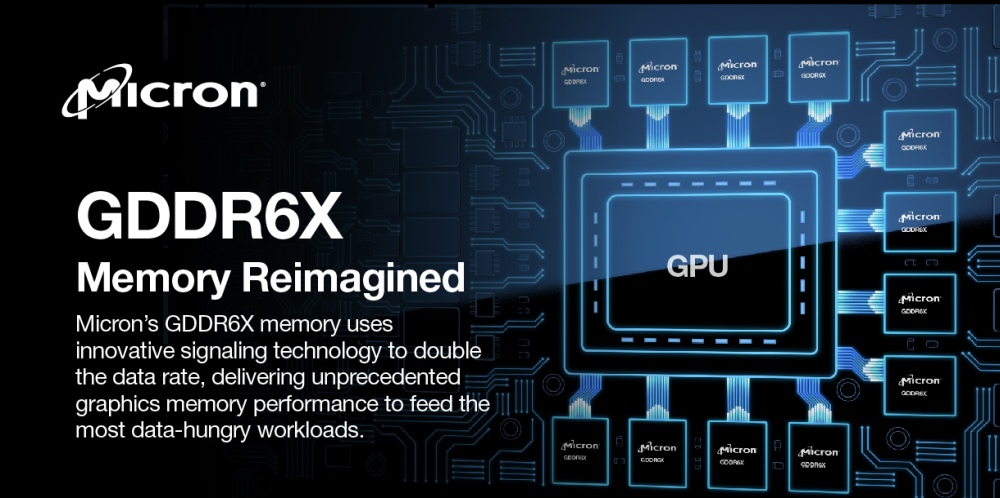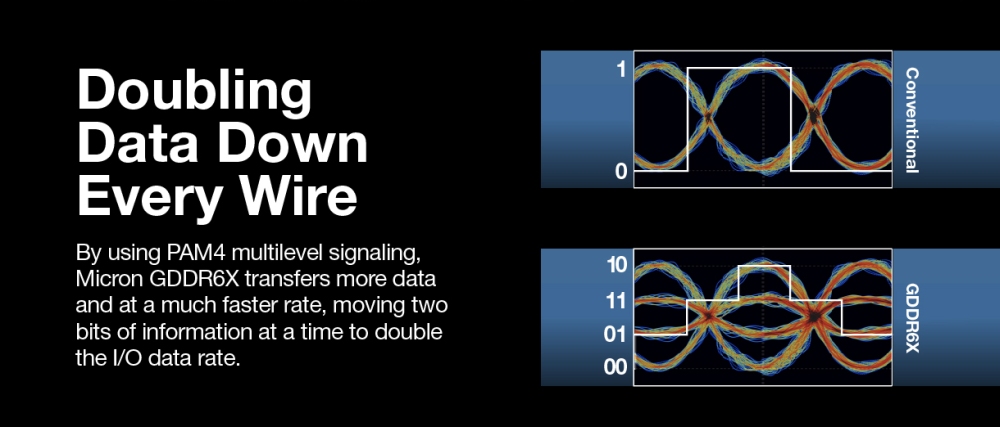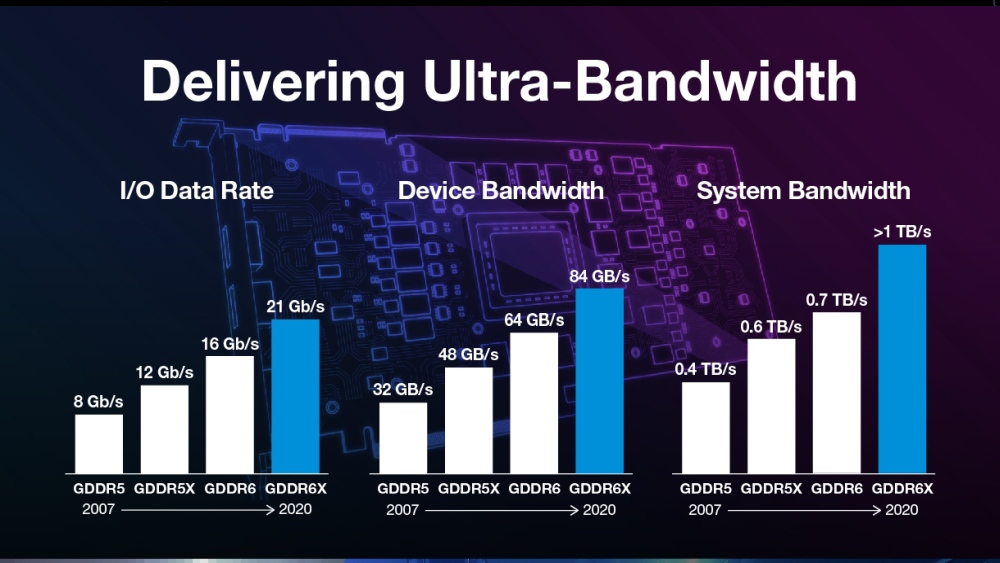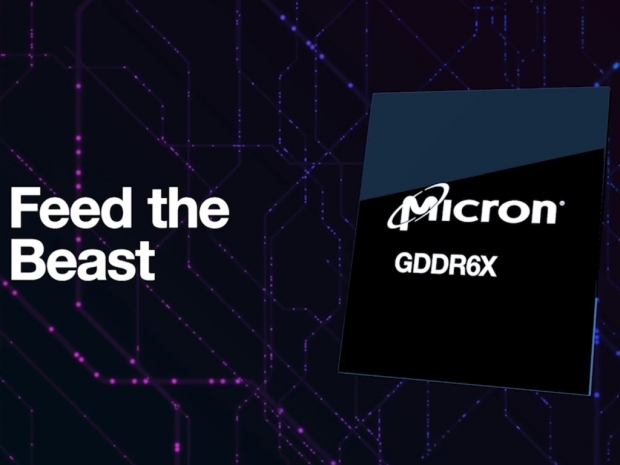Currently, Micron's GDDR6X is available in 8Gb (1GB) capacities and speeds from 19 to 21Gbps, but 16Gb (2GB) chips will be coming in 2021.
When it comes to specification, the GDDR6X from Micron uses PAM4 signal transmission technology, doubling data rate and delivering over 30 percent higher performance compared to standard GDDR6 memory chips.


In terms of performance, this translates to 21Gbps of I/O data rate, 84GB/s of device bandwidth, and over 1TB/s of system bandwidth.

“Our multilevel signaling innovation in GDDR6X has shattered conventional bandwidth limits, clocking record-breaking speeds,” said Tom Eby, senior vice president and general manager of the Compute & Networking Business Unit at Micron. “Unlike traditional memory, GDDR6X has unparalleled data rates that can keep pace with gaming innovation and data-hungry applications — setting a new standard for graphics memory.”
Nvidia's RTX 30 series, or to be precise, RTX 3080 and the RTX 3090, will be first with GDDR6X memory, with the RTX 3080 featuring 10GB and RTX 3090 coming with 24GB of memory. Of course, Nvidia is dialing down on the memory clock, so RTX 3080 memory will tick at 19Gbps, while RTX 3090 pushes it up to 19.5Gbps, which means there should be some additional room for overclocking.
“With the unprecedented speed of GDDR6X, Micron has delivered tomorrow’s memory technology today, and it’s at the heart of NVIDIA GeForce RTX 3090 and 3080 GPUs — helping us deliver rich, realistic, cinematic user experiences,” said Jeff Fisher, senior vice president of the GPU Business Unit at NVIDIA. “Building on a history of collaboration that started with GDDR5, we’re thrilled to have reinvented the memory/GPU interface with Micron, setting a new bar for high-performance, high-resolution gaming.”




